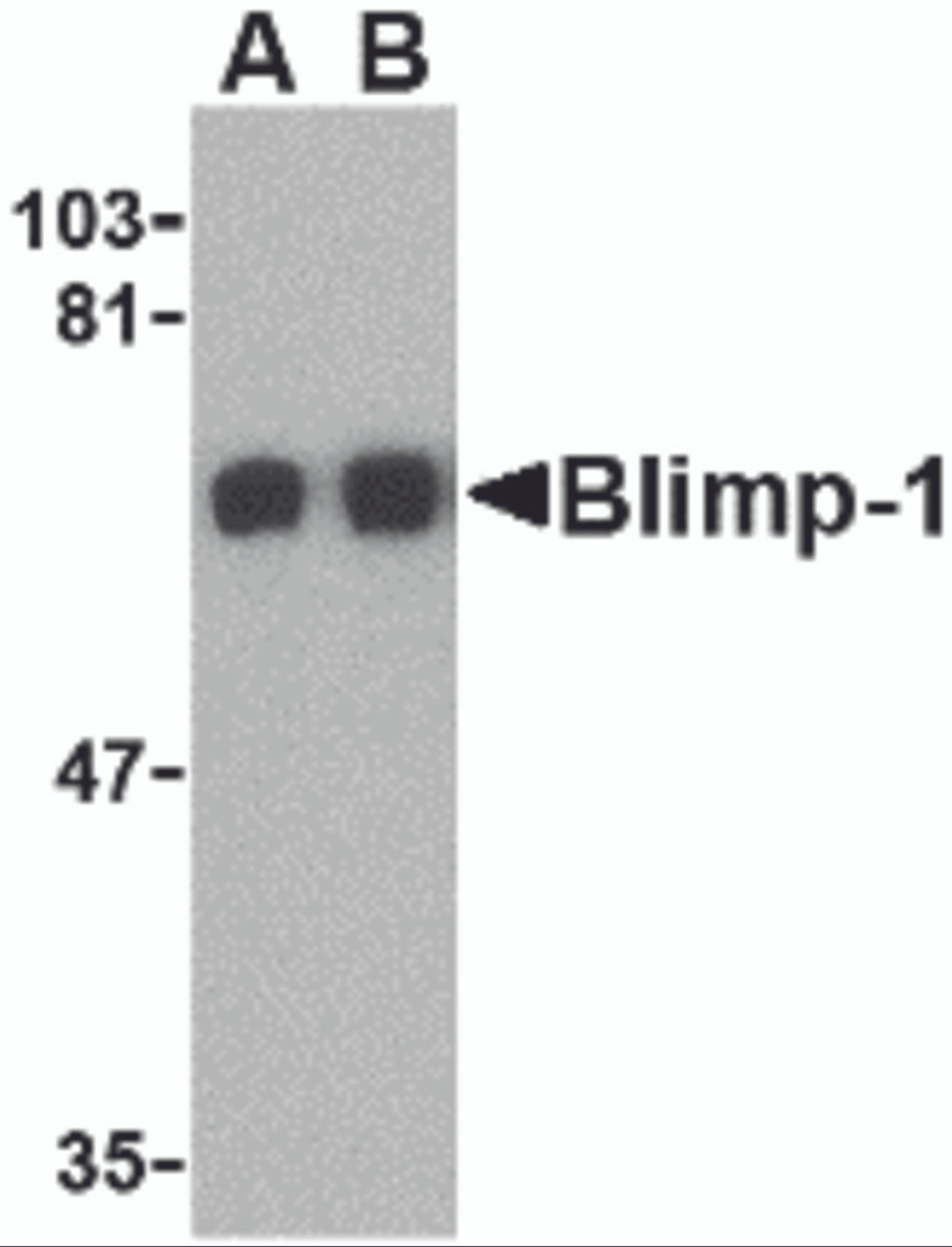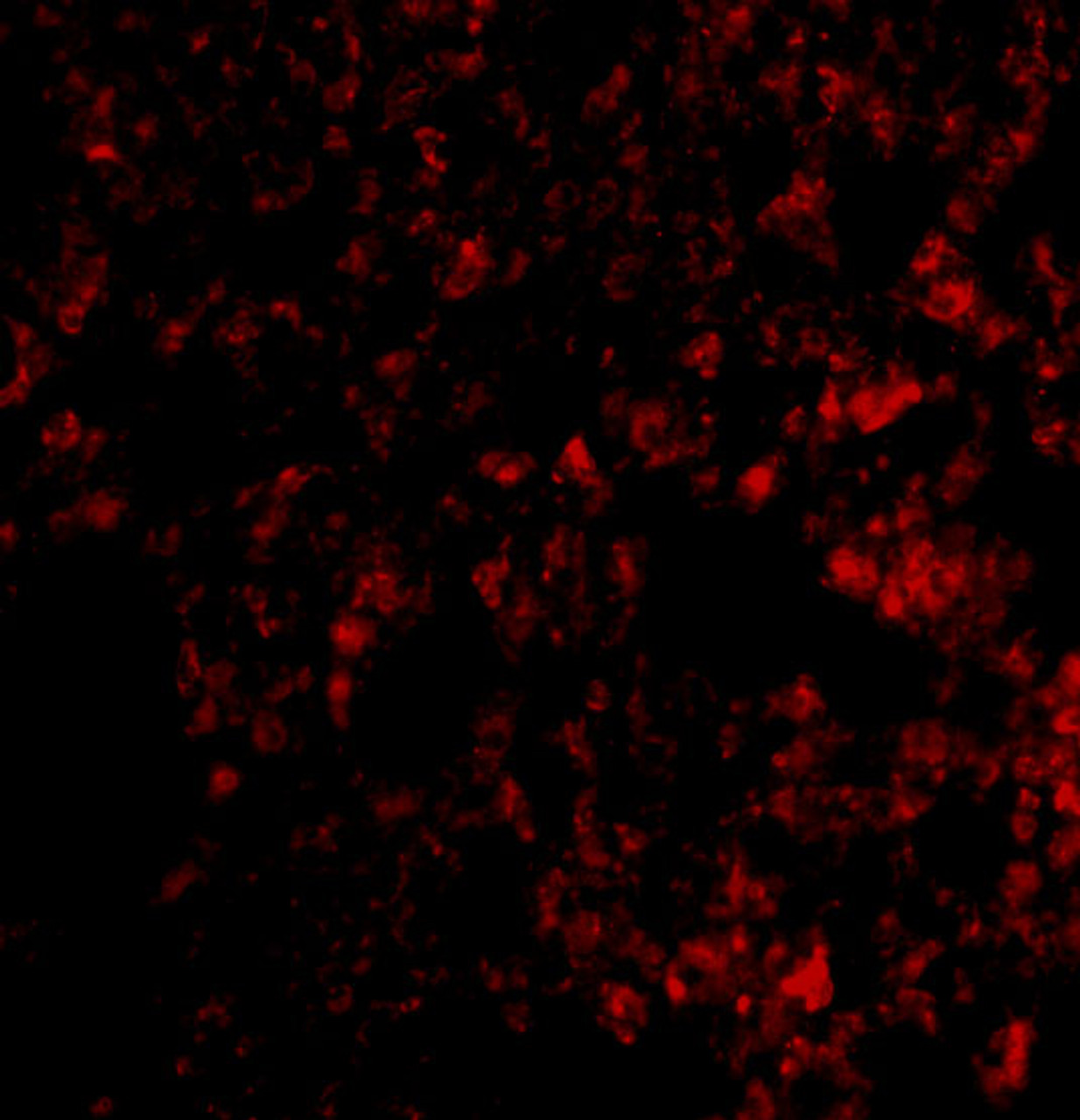Product Description
Blimp-1 Antibody | 3989 | ProSci
Host: Rabbit
Reactivity: Human, Mouse, Rat
Homology: N/A
Immunogen: Blimp-1 antibody was raised against a 14 amino acid peptide from near the carboxy terminus of human Blimp-1.
The immunogen is located within the last 50 amino acids of Blimp-1.
Research Area: Immunology
Tested Application: E, WB, IF
Application: Blimp-1 antibody can be used for detection of Blimp-1 by Western blot at 0.5 - 1 μg/mL. Antibody can also be used for immunoflourescence starting at 20 μg/mL. For immunofluorescence start at 20 μg/mL.
Antibody validated: Western Blot in human samples and Immunofluorescence in mouse samples. All other applications and species not yet tested.
Specificiy: N/A
Positive Control 1: Cat. No. 1203 - A549 Cell Lysate
Positive Control 2: N/A
Positive Control 3: N/A
Positive Control 4: N/A
Positive Control 5: N/A
Positive Control 6: N/A
Molecular Weight: N/A
Validation: N/A
Isoform: N/A
Purification: Blimp-1 Antibody is affinity chromatography purified via peptide column.
Clonality: Polyclonal
Clone: N/A
Isotype: IgG
Conjugate: Unconjugated
Physical State: Liquid
Buffer: Blimp-1 Antibody is supplied in PBS containing 0.02% sodium azide.
Concentration: 1 mg/mL
Storage Condition: Blimp-1 antibody can be stored at 4˚C for three months and -20˚C, stable for up to one year. As with all antibodies care should be taken to avoid repeated freeze thaw cycles. Antibodies should not be exposed to prolonged high temperatures.
Alternate Name: Blimp-1 Antibody: BLIMP1, PRDI-BF1, BLIMP1, PR domain zinc finger protein 1, BLIMP-1
User Note: Optimal dilutions for each application to be determined by the researcher.
BACKGROUND: Blimp-1 Antibody: Blimp-1 was initially identified as a zinc finger-containing protein that drives the maturation of B lymphocytes into immunoglobulin-secreting cells. Together with X-box-binding protein 1 (XBP1) , Blimp-1 is induced upon terminal differentiation of plasma cells. The transcriptional repressor activity of Blimp-1 has also been found to regulate T cell homeostasis and function, possibly by suppressing the expression of the cytokines IL-2 and interferon-gamma during T cell development. More recent experiments have suggested that Blimp-1 also plays a major role in the formation of primordial germ cells (PGC) in developing mammalian embryos. In these experiments, Blimp-1-deficient mutant mouse embryos form a cluster of PGC-like cells which fail to show the expected migration, proliferation, and repression of homeobox genes that normally accompany specification of primordial germ cells.
 Euro
Euro
 USD
USD
 British Pound
British Pound
 NULL
NULL
















